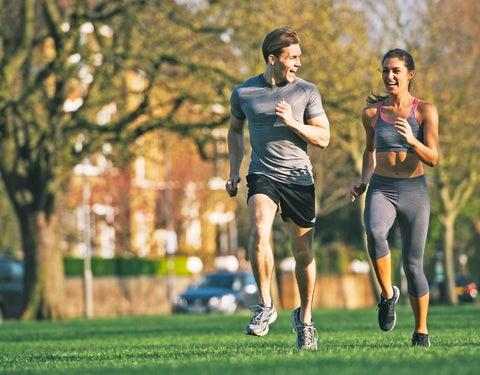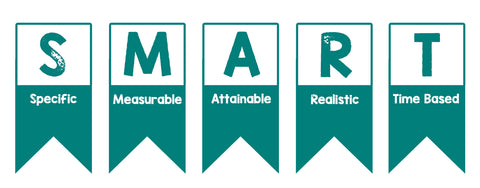Running a Marathon: Pre-Training

This blog is written by friend of Neat, Dr Nick Ambatzis MB BS, MSc (SEM), MRCGP.
Nick is a General Practitioner specialising in Sports and Exercise Medicine. He completed his medical degree at University College London Medical School in 2002. Nick worked for almost ten years as a junior surgeon and spent three years in Trauma & Orthopaedics. He attained a Masters in Sports and Exercise Medicine and subsequently trained as a GP practising in Paddington.
From an early age, Nick has been both a keen cross-country runner and water-polo player, having competed at college level. Nick is also an accomplished ultra-marathon runner, having competed in many cross-country and cross-alpine races, ranging from 50-100 miles. He has also been a Crossfit and Crossfit Endurance coach.
Psychology
I wouldn’t say that running 42km is abnormal, though I wouldn’t call it normal either, so why do we do it? The reason doesn’t really matter; the psychological determination to cross that finish line does. The Gebrselassies of this world may make it look easy, but for most of us, running that far takes grit, determination and an ability to ignore pain. Sure, you can walk around the course in six hours, but then what’s the point of even showing up at the start? If your mind isn’t in it, your body will soon follow suit.
Training for a marathon or any competitive event can be difficult in the beginning. I tell my patients all the time to start exercising and their number one excuse is always time. Time is never really the issue, routine is. You don’t need to do a long run every day, so finding 45-60 minutes to train is not impossible. Once you put in the effort for a week or two, it’s established in your daily routine and becomes ‘normal’. Another aspect that will be hard at first but then routine, is changing your diet and social life. If you’re out every Friday and Saturday drinking, you may want to review how you spend your time. From that comes the ability to politely decline offers for drinks and late nights. You don’t need to become a monk, but you need to pick which days you reserve for social events. Don’t forget “I’m training for the marathon” earns you a very easy out and if your friends don’t get that, perhaps invest in more understanding friends!
So with that said, start by setting yourself some goals that are SMART:

Smart goals will give you a chance to step up your training and celebrate small wins. Motivation is key when training for an event like a marathon and if you can keep yourself motivated by achieving smaller goals on the way to bigger ones, you’ll be more likely to succeed. An example of a SMART goal is: ‘I will run ten miles in under ninety minutes’. This is a specific goal that is measurable and the time-based target is when you want to achieve it by, e.g. in 10 days. If it fits with your training plan then it’s relevant and as long as you’re working towards that goal, it’s attainable.
Pre-Existing Conditions
There are some medical conditions that will affect your training and very few that may prevent you from doing any exercise without medical supervision. Be sure to check these out before you commit to a training plan.
Medical conditions such as Asthma, Diabetes and Epilepsy will need optimised exercise plans. Training when these conditions are uncontrolled can lead to serious consequences. Other conditions such as depression and anorexia nervosa also need to be addressed, ideally by a mental health professional. However, for all of the above, your GP is your first point of call and you should ensure you have regular reviews. One of the biggest concerns facing young athletes today, is undiagnosed cardiac conditions that can lead to sudden death. Though there is a national screening program: Cardiac Risk in the Young (CRY), the first thing to do, would be to see your doctor and get some basic screening done. This at the very least should include a thorough history, examination and 12-lead ECG. Most GP’s understand the importance of screening underlying cardiac pathology and will arrange this for you. I have sadly come across quite a few who will make a fuss and may even suggest that you should stick to walking as your exercise! Be proactive and if you think your doctor is not providing the service you require, seek a second opinion.
Other things to address medically prior to embarking on training, are pre-existing musculoskeletal injuries. These can be varied in location and intensity, but know that even a little niggle can become amplified during prolonged training. My advice would be to see a decent osteopath or physiotherapist. If the issue is foot related, then a good podiatrist would be best.
Kit
This is very personal and items of kit that work well for some people may not work for others. Within each personal kit list, there will also be kit options for various weather and underfoot conditions, as well as the types of training e.g. sprinting, gym work, long runs etc.
The most important piece of kit, is your trainers. I have seen a multitude of injuries ranging from feet, lower legs, knees, ITB, hip and back all caused by inappropriate footwear. In the majority of cases, trainers were bought in shops that don’t do proper gait analysis and usually because they feel (and look!) right. I recommend Runner’s Need, as I’ve found the majority of staff competent at gait analysis and most are runners themselves. Don’t let the decision of what you wear on your feet be affected by aesthetics. If the assistant tells you “this is the trainer for you” and it’s luminous yellow, then that’s the trainer for you. When you go, don’t forget to wear the socks you will most likely be using with your trainers (or similar) and never get fitted first thing in the morning as this is when your feet are least swollen. Afternoon is the best time.
Second in order of importance, are your socks, but again this is very much a personal thing. There are hundreds of types out there, but the key element is to ensure that they keep your skin as dry and friction free as possible. The same principles of being dry and friction free apply to clothing also, with added criteria of needing to keep you warm in cold conditions and cool in the warm.
I'll go more into preventative tips and tricks in the next update.
Happy trails!
